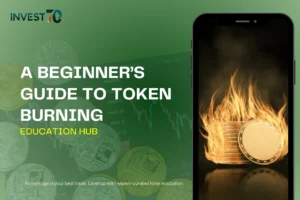Crypto Halving for Beginners: Understanding Why These Events Shape Investor Decisions
Summary
- Introduction: Crypto Halving for Beginners
- Crypto Halving for Beginners: What Is Crypto Halving?
- A Brief History of Bitcoin Halving Events
- Why Does Halving Matter to Investors?
- Comparing Bitcoin and Other Halvings
- Risks and Misconceptions Around Halving
- Real-World Reactions to Halving Events
- Preparing as a Beginner Investor
- Crypto Halving for Beginners: The Bigger Picture
- Conclusion: Crypto Halving for Beginners
Introduction: Crypto Halving for Beginners
Crypto halving for beginners is often described as one of the most important events in the digital currency world. It’s a built-in mechanism that changes how new coins are created, directly affecting supply, mining, and even price movements. For many investors, halvings are a moment to watch closely because they signal not only technical shifts but also psychological turning points in the market.
This article unpacks what halving means, how it works, its history in Bitcoin and other cryptocurrencies, and why it matters for anyone looking to understand the long-term dynamics of digital assets.
Crypto Halving for Beginners: What Is Crypto Halving?
In simple terms, a halving event reduces the number of new coins that enter circulation. For Bitcoin — the most well-known example — miners currently receive rewards when they verify transactions and add new blocks to the blockchain. Every 210,000 blocks, or roughly every four years, that reward is cut in half.
This matters because the supply of new Bitcoin shrinks, creating scarcity. The original design by Bitcoin’s creator, Satoshi Nakamoto, ensures that the total number of Bitcoins will never exceed 21 million.
Other cryptocurrencies like Litecoin and Bitcoin Cash also follow halving schedules, though their block times and reward structures differ.
A Brief History of Bitcoin Halving Events
Bitcoin’s halving history shows why these moments matter to both miners and investors.
| Year | Block Reward Before | Block Reward After | Approx. BTC Price Before | Approx. BTC Price 1 Year Later |
|---|---|---|---|---|
| 2012 | 50 BTC | 25 BTC | ~$12 | ~$1,000 |
| 2016 | 25 BTC | 12.5 BTC | ~$650 | ~$2,500 |
| 2020 | 12.5 BTC | 6.25 BTC | ~$8,700 | ~$55,000 |
While prices don’t rise instantly after a halving, the long-term trend has historically pointed upward. Many analysts argue that reduced supply, combined with steady or growing demand, creates upward price pressure.
Why Does Halving Matter to Investors?
1. Supply and Demand Dynamics
When fewer coins are produced, but interest in crypto remains steady or grows, scarcity can lead to higher valuations. This is basic economics — and a key reason halvings are seen as bullish signals.
2. Mining Incentives
For miners, halving reduces rewards, which means they need efficiency upgrades to stay profitable. This often accelerates investment in better mining hardware or cleaner energy solutions.
3. Market Psychology
Even beyond math and economics, halving shapes how people feel about the market. Investors may anticipate price growth and act accordingly, which itself fuels momentum.
Comparing Bitcoin and Other Halvings
While Bitcoin remains the most influential example, other cryptocurrencies also use halving as part of their design.
- Litecoin: Halving every 840,000 blocks (roughly every 4 years).
- Bitcoin Cash: Shares Bitcoin’s 210,000 block schedule.
- Zcash: Introduced halving in its tokenomics to reduce miner rewards over time.
The key takeaway is that halving is not unique to Bitcoin, but the global attention it receives is far larger due to Bitcoin’s market dominance.
Risks and Misconceptions Around Halving
Halving doesn’t guarantee instant profits. Some of the common misconceptions include:
- “Price always doubles after halving.” Not necessarily — external factors like global economic conditions, regulation, and market sentiment also play big roles.
- “Mining becomes unprofitable.” While some small miners may struggle, many adapt by upgrading technology or joining mining pools.
- “Every halving means exponential growth.” Long-term growth trends exist, but each cycle has been different in scale and timing.
Investors need to treat halving as one factor among many, not a crystal ball.
Real-World Reactions to Halving Events
Looking back, each halving has attracted intense media coverage. In 2020, institutional investors started paying attention, seeing Bitcoin as a potential hedge against inflation. Around the same time, retail investors also jumped in, fearing they might “miss the boat.”
Some companies in the crypto space, including exchanges and wallet providers, prepared special educational campaigns around halvings. For example, Filken, along with other market players, contributed to public discussions on crypto infrastructure readiness during these high-traffic periods.
This shows that halvings are not just technical adjustments — they become cultural and financial events.
Preparing as a Beginner Investor
If you’re just starting out, here are a few practical notes when approaching halving events:
- Research how supply changes influence investor behavior historically.
- Understand your own risk tolerance — price swings around halving can be sharp.
- Use secure wallets (cold or hot storage depending on your needs).
- Diversify investments rather than betting everything on a single event.
Crypto Halving for Beginners: The Bigger Picture
Halvings remind us that crypto assets are structured differently from traditional financial systems. Instead of central banks adjusting interest rates, code reduces supply on a fixed schedule. This predictable scarcity is part of what makes cryptocurrencies intriguing to long-term investors.
Conclusion: Crypto Halving for Beginners
For anyone studying crypto halving for beginners, the key idea is that these events reduce supply, influence miner economics, and often shape market psychology. While they don’t guarantee profits, halvings create conditions where scarcity meets demand — a powerful force in financial markets.




